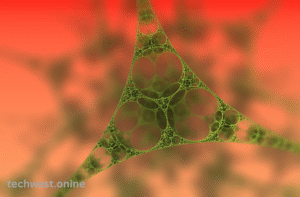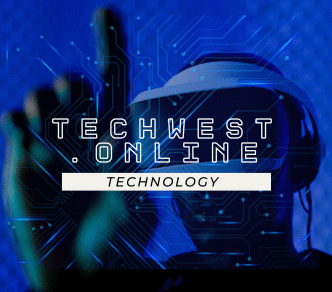Introduction to Nanotechnologies
Nanotechnology, the manipulation of matter at the atomic and molecular level, is revolutionizing industries globally. By dealing with materials at the nanoscale (1 to 100 nanometers), scientists and engineers are able to make new solutions with unmatched precision and function. From medicine to electronics, energy to manufacturing, nanotechnologies are taking advancements forward that hold the key to a sustainable and efficient future. This article delves into the uses, advantages, and future prospects of nanotechnologies, designed for the keyword “nano technologies filetype:ppt” to help create engaging PowerPoint presentations for academic or professional use.
What is Nanotechnology?
Nanotechnology entails the creation, fabrication, and utilization of nanoscale materials and devices. Material properties at this scale are different from the bulk material and include unique physical, chemical, and biological characteristics. Such properties create breakthroughs in areas of interest, making nanotechnology a pillar of contemporary innovation. In PowerPoint presentations, illustrating nanotechnology ideas with diagrams, charts, and animations has the potential to describe the magnitude and impact of nanotechnology to the audience.

Key Applications of Nanotechnologies
1. Medicine and Healthcare
Nanotechnology is transforming medicine by enabling targeted drug delivery, diagnostics, and tissue engineering. Nanoparticles may be used to deliver drugs right to the site of diseased cells, reducing side effects and enhancing the effectiveness of treatment. For example, nanocarriers are employed in cancer treatments to target the tumors with specificity. In diagnostics, nanosensors allow for the early diagnosis of disease by detecting biomarkers at low concentrations. A PowerPoint slide on this subject might contain images of nanoparticles interacting with cells backed by evidence on better patient outcomes.
2. Electronics and Computing
The electronics industry relies heavily on nanotechnology to create smaller, faster, and more efficient devices. Nanoscale transistors, found in modern microchips, enable the production of compact yet powerful smartphones, laptops, and IoT devices. Quantum dots, another nanotechnology innovation, enhance display quality in TVs and monitors. For a presentation, include slides comparing traditional transistors to nanoscale ones, highlighting size and performance differences.
3. Energy and Environment
Nanotechnologies provide sustainable energy solutions by way of more efficient solar cells, batteries, and fuel cells. Nanomaterials such as graphene enhance the energy storage in lithium-ion batteries, allowing for quicker charging and longer power operation. In environmental technology, nanocatalysts are used to clean water and air by degrading pollutants. A PowerPoint slide might display a graph of energy efficiency improvement from nanomaterials highlighting their contribution to climate change mitigation.
4. Manufacturing and Materials
Nanotechnology improves material properties, producing stronger, lighter, and more resilient products. Carbon nanotubes, for instance, are utilized in aerospace to create high-strength, lightweight composites. Self-cleaning surfaces, facilitated through nanocoatings, are utilized in construction and textiles. An example presentation slide may include before-and-after photographs of nanomaterial applications, e.g., scratch-resistant coatings or flexible electronics.
5. Agriculture and Food Safety
In farming, nanotechnology enhances agricultural productivity and food safety. Nanosensors track soil health and identify pesticides, whereas nanoencapsulated fertilizers are released in an efficient manner. In food packaging, nanomaterials increase the shelf life by inhibiting spoilage. In a PowerPoint, present case studies or graphs indicating how nanotechnology increases agricultural productivity and safety.
Benefits of Nanotechnologies
1. Improved Efficiency
Nanotechnologies minimize resource utilization, lessening waste and energy intake. Nanocatalysts in industrial processes, for instance, decrease energy needs, making processes more efficient. A slide may include a chart of energy consumption comparing normal and nanotechnology-advanced processes.
2. Improved Performance
Nanomaterials increase product performance in various industries. In electronics, components at the nanoscale enhance processing speed, while in medicine, nanomedicines enhance drug efficacy. A PowerPoint may show side-by-side comparisons to demonstrate improvements in performance.
3. Sustainability
Nanotechnology enables green solutions, including renewable power and pollution management. Solar panels with nanomaterials enhance efficiency, which becomes more feasible with clean energy. The presentation slide may capture worldwide CO2 saving potential through the use of nanotechnology.
4. Precision and Customization
The capability to manipulate matter at the atomic level enables highly personalized solutions. In medicine, patient-specific nanotherapies address individual patient needs. One slide may contain a flowchart of how nanotechnology makes precision medicine possible.
5. Economic Growth
The market for nanotechnology is expected to expand considerably, generating jobs and stimulating innovation. A PowerPoint may contain market growth data, including the global size of the nanotechnology market, anticipated to be billions by 2030.
Challenges of Nanotechnologies
Despite its potential, nanotechnology faces challenges that should be addressed in presentations. These include:
-
Health and Safety Concerns: The long-term effects of nanomaterials on human health and the environment are not fully understood. Slides could discuss ongoing research into nanotoxicology.
-
High Costs: Developing nanotechnology requires significant investment in research and equipment. A slide could outline cost barriers and potential solutions, like public-private partnerships.
-
Regulatory Challenges: Governments continue to work on frameworks for regulating nanomaterials. A slide could be a timeline of key regulatory milestones.
-
Public Perception: Misconceptions regarding nanotechnology could prevent adoption. A slide could include debunking myths along with fact-based counterarguments.
Building an SEO-Optimized PowerPoint on Nanotechnologies
1. Keyword Incorporation
Integrate the keyword “nano technologies” organically into the presentation. Use it in the title slide, headings, and slide notes. For instance:
-
Slide Title: “Nano Technologies: Shaping the Future”
-
Header Slide: “Applications of Nano Technologies in Healthcare”
2. Interactive Visuals
Employ good-quality images, diagrams, and animations to depict concepts in nanotechnology. For example, a slide of a nanoparticle’s structure can wow the audience. Label visuals with alt text incorporating the keyword for search engine optimization.
3. Brief and Informative Material
Have slides be brief, with bullet points highlighting most important details. Utilize speaker notes to make detailed explanations of complicated topics. For instance:
-
Slide: “Nanotechnology in Electronics”
-
Bullet: “Nanoscale transistors allow for quicker, more compact devices.”
-
Note: “Nano technologies such as quantum dots increase display quality, leading to demand for consumer electronics.”
-
4. Call-to-Action Slides
Add slides that promote a call to action, i.e., looking up a website or a whitepaper on nanotechnology. Insert hyperlinks with the keyword as anchor text, e.g., “Learn more about nano technologies.”
5. File Optimization
Save the PowerPoint as a .ppt file and name the file with the keyword, e.g., “Nano_Technologies_Presentation.ppt”. Include metadata, i.e., title and description, with the keyword to enhance searchability.
Sample PowerPoint Slide Structure
Slide 1: Title Slide
-
Title: Nano Technologies: Revolutionizing Industries
-
Subtitle: Exploring the Power of the Nanoscale
-
Visual: Image of a nanoparticle or atomic structure
-
Note: Establish the revolutionary potential of nano technologies.
Slide 2: What is Nanotechnology?
-
Bullet Points:
-
Definition: Manipulating matter at 1-100 nanometers
-
Unique properties at the nanoscale
-
Applications across industries
-
-
Visual: Diagram of a nanoparticle
-
Note: Discuss how nano technologies are not the same as conventional technologies.
Slide 3: Applications in Healthcare
-
Bullet Points:
-
Targeted drug delivery
-
Nanosensors for diagnostics
-
Tissue engineering advancements
-
-
Visual: Chart showing better treatment effectiveness
-
Note: Discuss how nano technologies enhance patient outcomes.
Slide 4: Nanotechnology in Electronics
-
Bullet Points:
-
Nanoscale transistors for faster chips
-
Quantum dots for brighter displays
-
Miniaturization of devices
-
-
Visual: Comparison of traditional vs. nanoscale transistors
-
Note: Discuss the role of nano technologies in modern devices.
Slide 5: Sustainability and Energy
-
Bullet Points:
-
Nanomaterials in solar cells
-
Improved battery performance
-
Pollution control with nanocatalysts
-
-
Visual: Graph of energy efficiency gains
-
Note: Emphasize the environmental benefits of nano technologies.
Slide 6: Challenges and Future Outlook
-
Bullet Points:
-
Health and safety concerns
-
Cost and regulatory challenges
-
Future innovations in nanotechnology
-
-
Visual: Timeline of nanotechnology milestones
-
Note: Address challenges while highlighting growth potential.
Slide 7: Conclusion and Call to Action
-
Bullet Points:
-
Summary of nanotechnology’s impact
-
Encouragement to explore further
-
-
Visual: Inspirational image of nanotechnology applications
-
Note: Include links to resources on nano technologies.
Future of Nanotechnologies
The future of Nano technologies is promising, with continuing research expanding the limits of what can be done. Development of nanomaterials, including graphene and nanocomposites, will yield lighter, more durable products. In medicine, nanobots would be able to conduct minimally invasive procedures. In energy, nanotechnology may make available cheap, large-scale renewable systems. For a PowerPoint, have a forward-looking slide with projections, like market growth or new uses, to get people excited.
Conclusion
Nanotechnology is transforming industries by allowing for unheard-of precision, efficiency, and sustainability. Whether in healthcare or electronics, its uses are myriad and revolutionary. With the creation of a PowerPoint presentation optimized for “nano technologies filetype:ppt,” you can clearly convey its potential to mixed audiences. Utilize compelling images, brevity in content, and calculated keyword placement so the presentation is both educational and searchable. As nanotechnology advances, its influence will increase, and hence it is an imperative subject for education, research, and industry discourse.
